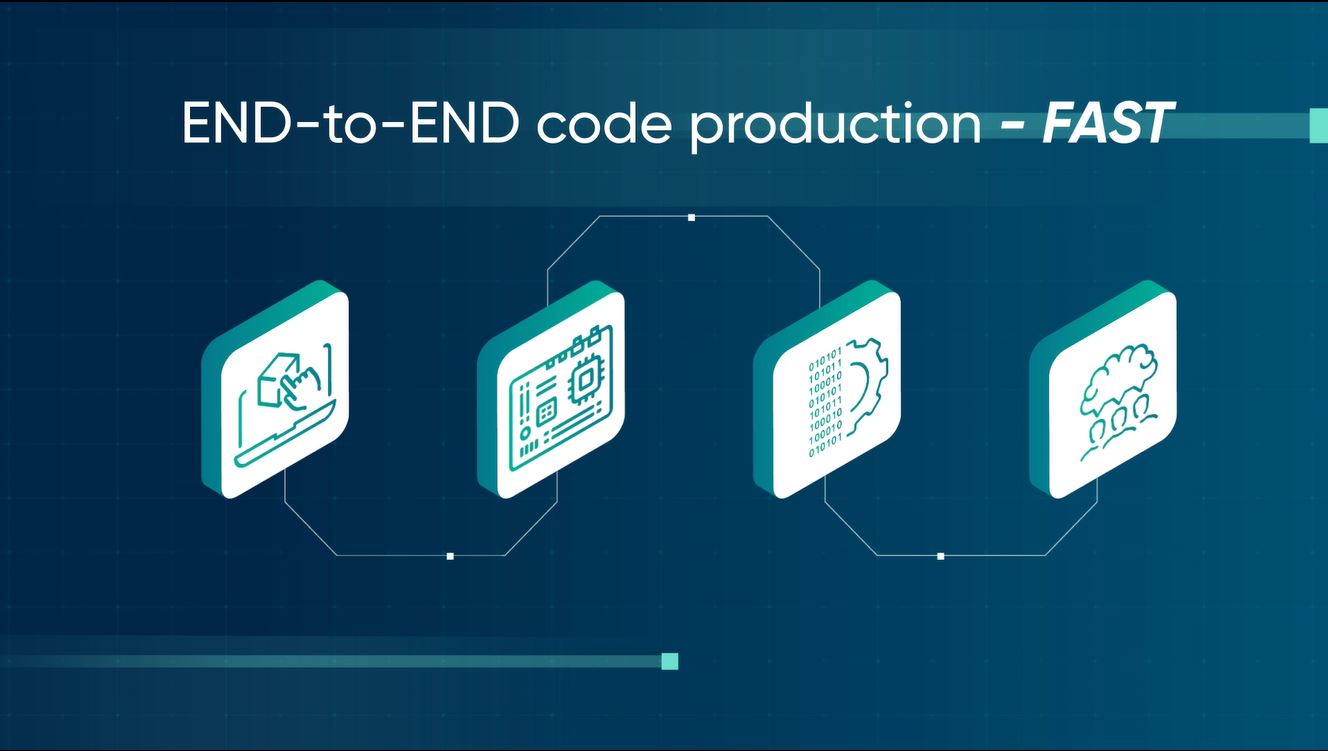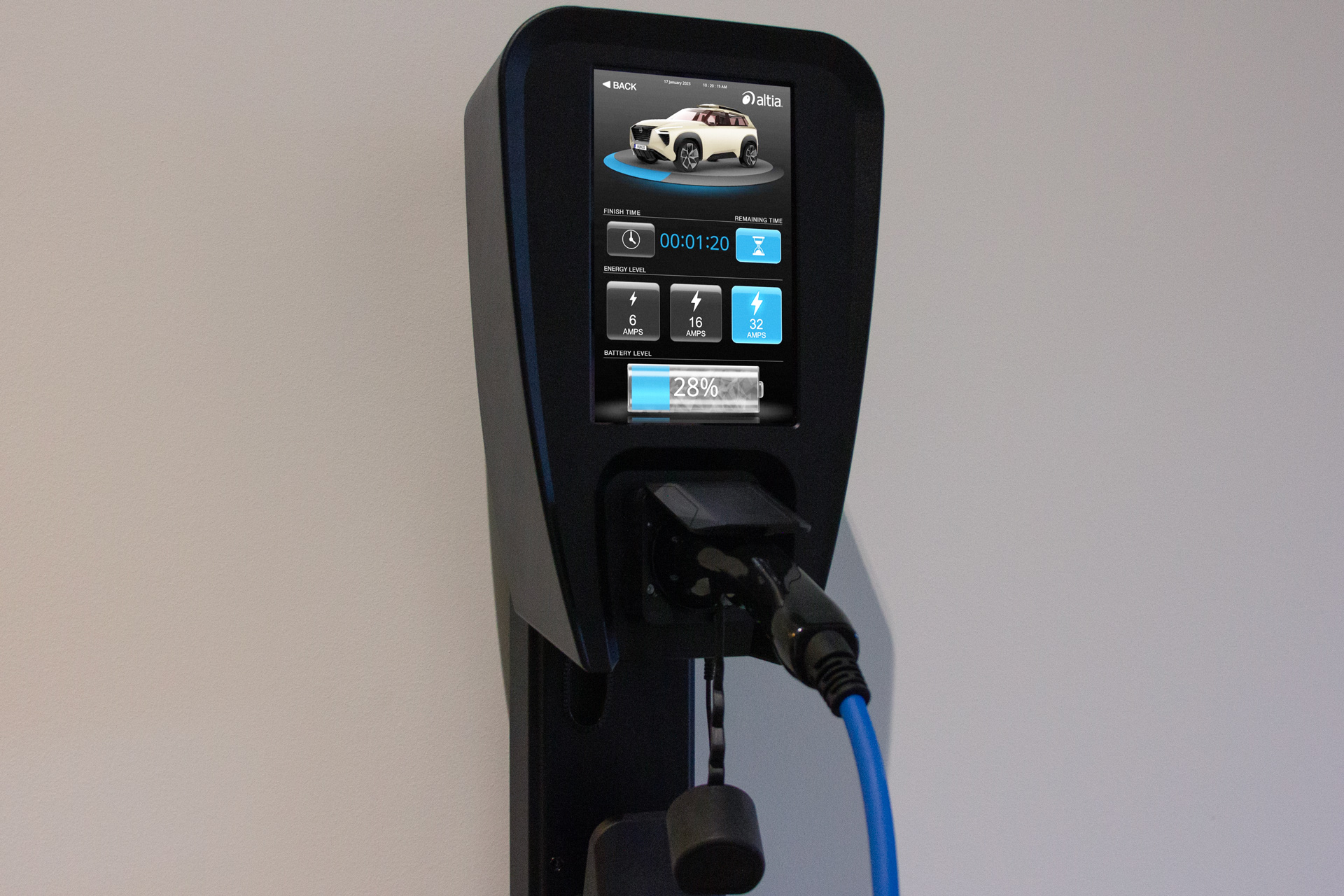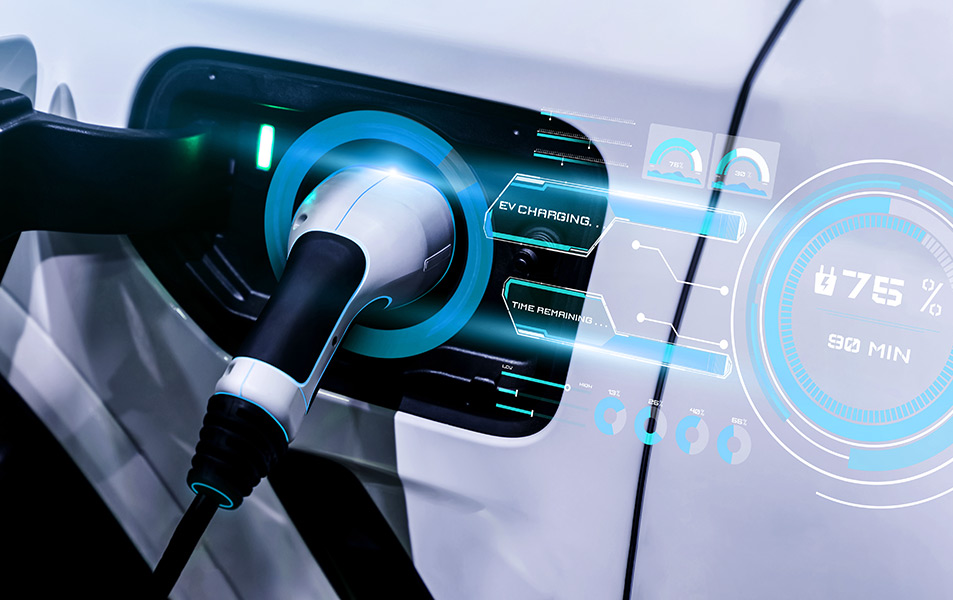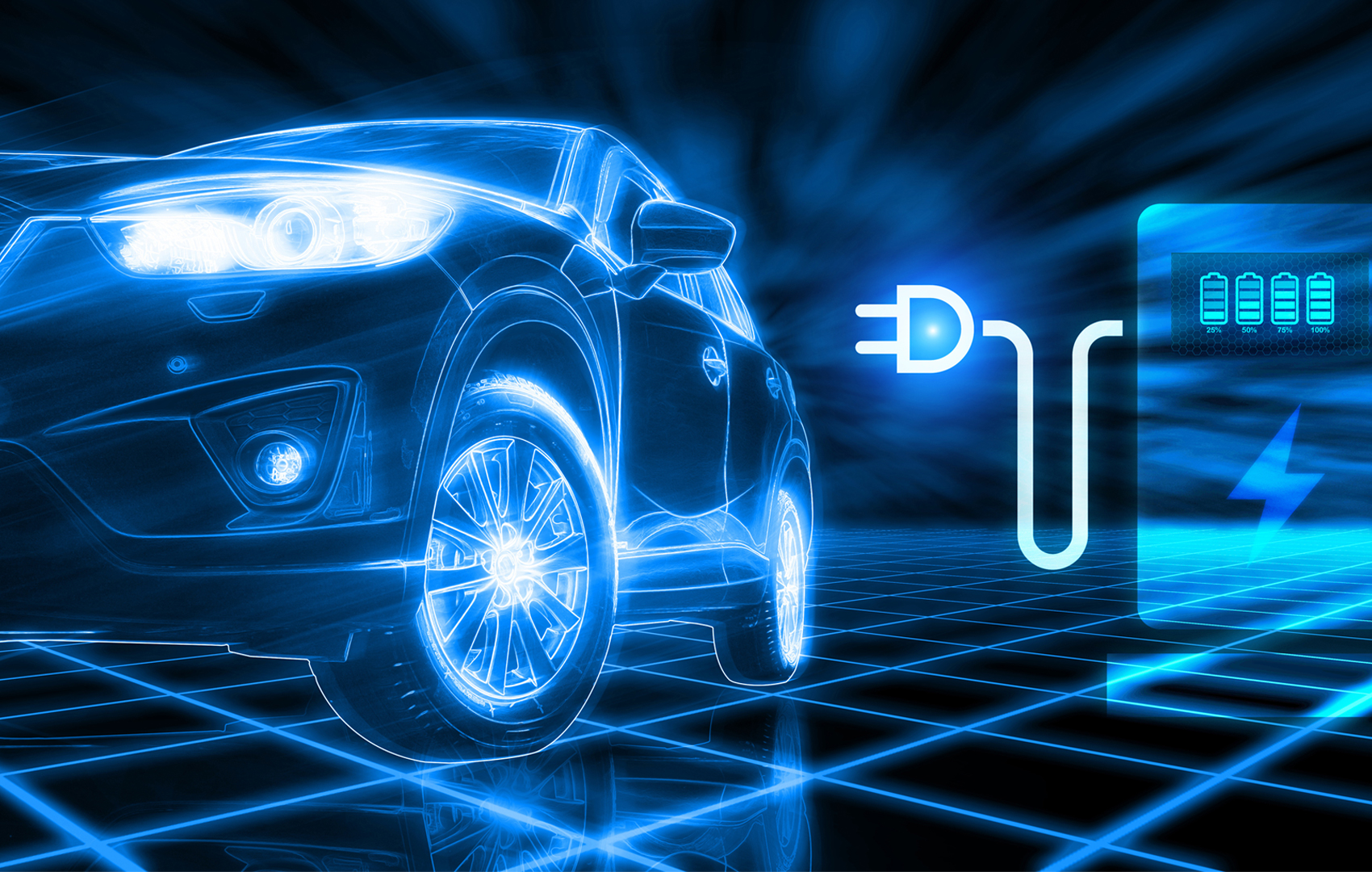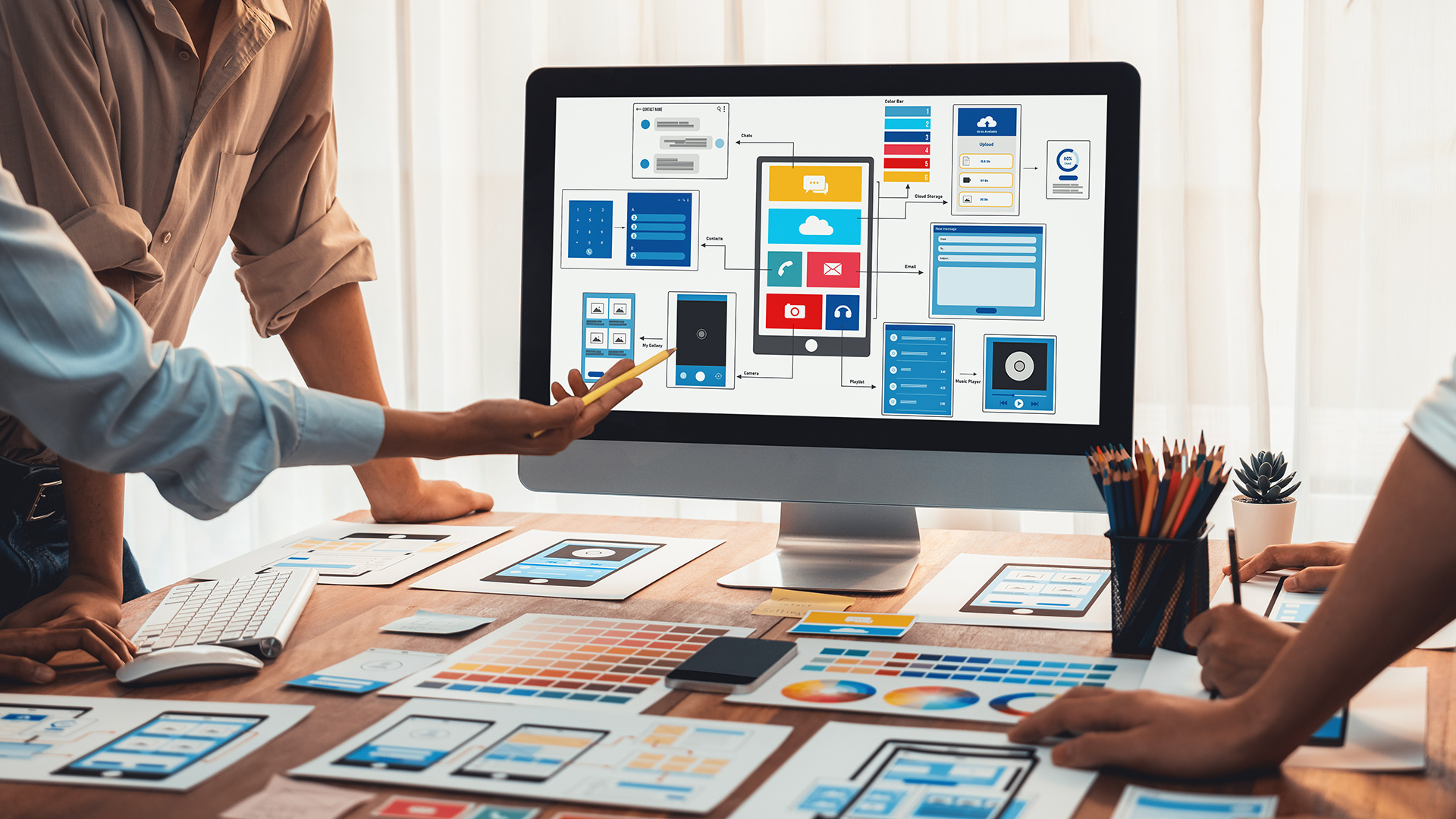Resources Industries: Recreational Vehicles
EV Charging Station GUI
Altia Learn Drives Results with New Impactful Learning Tools
How to Reduce Power Consumption in EV HMIs
A Roadmap for Designing and Deploying Medical Device GUIs
Altia Announces DeepScreen GUI Code Running on Infineon XMC7200 MCU
Altia today announces that Altia DeepScreen-generated graphics code is running on an Infineon XMC7200 32-bit microcontroller (MCU). With a rich history for success deploying embedded GUIs for production embedded devices, Altia and Infineon can now offer the capability to deliver high-impact, optimized graphics for industrial devices like EV charging stations, electric motorbikes and other IoT applications.
The Infineon XMC7200D-E272K is designed to meet the requirements for industrial applications—and is a true programmable embedded system-on-chip, integrating two 350-MHz Arm® Cortex®-M7 as the primary application processor and one 100-MHz Arm® Cortex®-M0+. This MCU includes up to 8 MB flash and 1 MB SRAM. It also includes an embedded multi-media card (eMMC) interface for easily extending flash memory.
“Infineon’s XMC7200 MCUs offer best-in-class compute performance, equipped with dual Arm® Cortex® M7 cores, flash memory up to 8 MB and many other value-added features for high-end industrial applications, supporting next-generation embedded displays and advanced graphics,” said Lisa Kamp, Software Product Marketing Manager, Infineon Technologies. “With Altia’s highly efficient graphics code, this product pairing enables our customers to deliver rich embedded GUIs for powerful and cost-effective applications, all enabled directly within the ModusToolbox™ software ecosystem.”
Altia is keenly suited to delivering embedded graphics solutions to memory efficient MCUs like the Infineon XMC7200 series. The Altia Binary Asset Manager is employed to trim design graphics to make efficient use of memory. Runtime font engines are included to optimize text shaping and text kerning. Altia’s code generator employs efficient software rendering for speedy GUI content even on MCUs without graphics acceleration or a display controller. Because Altia’s code generation solutions do not rely on hardware acceleration for graphics, Altia-generated code can be deployed to any hardware—even applications without operating systems.
“We are pleased to expand our code generation support to include Infineon’s MCUs. Our partnership began years ago in the automotive sector with the earliest generation of their TRAVEO™ products. Today, we continue to partner with Infineon in automotive with support for the second generation of TRAVEO™, the T2G series—and we are extending our reach to industrial applications with the PSoC™ 6 and the XMC7200,” stated Jason Williamson, Altia’s Vice President of Marketing. “The smart architecture of our DeepScreen code generators enables high impact, small footprint GUIs for any hardware.”
For more information about designing, developing and deploying embedded GUIs for the Infineon XMC7200 series, visit www.altia.com/get-started.
About Altia
Altia is a software company that provides graphical user interface design and development tools that can be used from concept to final production code. Our GUI editor, Altia Design, offers development teams the capability to implement a model-based development process enabling clear team communication and accelerated user interface development. Our code generator, Altia DeepScreen, supports a vast range of low- to high-powered processors from a variety of industry-leading silicon providers. Altia generates pure C source code that is optimized to take full advantage of hardware resources. Graphics code generated by Altia is driving millions of displays worldwide – from automotive instrument clusters, HUDs and radios to thermostats, washing machines and medical devices.
Our mission is to get the best automotive, medical and consumer interfaces into production in the shortest time on the lowest cost hardware.
Altia was founded in 1991. Its customers include automotive OEMs and Tier 1s like Continental Automotive, Denso, Fiat Chrysler Automobiles, Ford Motor Company, General Motors, Honda, Renault, Magneti Marelli, Nippon Seiki, Valeo, Visteon and more – plus leading consumer device manufacturers like Electrolux, Whirlpool, NordicTrack and many others.
For more information about Altia, visit www.altia.com or email [email protected].
Freeware GUIs are expensive
How Game Design Tools Are Modernizing Automotive Cockpits
9 Ways Your GUI Software Might Be Letting You Down
9 Ways Your GUI Software Might Be Letting You Down
Open-source software is attractive because there is no or low financial barrier to entry. Unfortunately, it leaves the door open to other costs. Developing and maintaining the GUI is 50% more expensive when you hand-code it. Then you have to pay for a commercial license if you don’t want to make your code open source. What started as a cost-saving measure sets you up for a long and expensive development cycle.
Alternatively, your GUI application development environment can accelerate design and delivery, even allowing you to test your design on real hardware as you build. Every job is easier with the right development tool. While you might not see heavy specialization from an open-source tool, some solutions and resources are made specifically with embedded GUI projects in mind.
Choose an Embedded GUI Tool That Helps, Not Hurts
Creating a great product isn’t easy, which is why some parts of the process must be simple. Choosing the right technology can prevent a lot of headaches for your embedded GUI team. These nine considerations will help you avoid common pitfalls and stay on the road to a successful release.
1 – Smaller Memory Footprint
Until money is no object, cost will always be a factor in the product development process. When manufacturers use the least expensive hardware, the product’s retail price will be more attractive to consumers. Every opportunity to reduce RAM and Flash requirements by 50% will show up in the bottom line, and vice versa.
For example, the budget for a smart thermostat cannot accommodate a $100 processor. The cost savings can also become dramatic as displays grow in size or complexity. Thoughtful architecture yields efficient code, keeping the hardware budget down. The ability to fit within a small memory footprint is especially vital for the code generated by low-code and no-code solutions.
2 – Low-Code or No-Code GUI Design
A small army of GUI developers can find ways to minimize the memory footprint, but such labor isn’t especially cost-effective. Low-code and no-code GUI design technology reduces engineering costs and the need for handoffs
If you’re a designer, draw a circle and drop it where you want it. No one has to think about the formula of a circle or how each pixel should display. When designers can use the software themselves, there’s less back-and-forth with engineers before it goes into manufacturing.
3 – Intuitive Usability
Altia customers report that using the right GUI design stack helps get teams up and running several times faster than other GUI application development environments. Any of the following might get you to market with less support and less wasted time:
- Integrations such as MathWorks Simulink
- Generalized API for a low learning curve
- Easy porting of the GUI onto hardware
It’s one thing to sit down and design without code. It’s another to get all the way to launch.
4 – Turnkey Support of Low- to High-Capability Hardware
Scalable and portable production programs make iterative growth easier to manage. Instead of reinventing the wheel, the same GUI design should be deployable repeatedly. One multinational oven manufacturer has been able to roll out new features one after another on top of the existing code base.
5 – Optimized Use of 3D Graphics
Working with 3D graphics can become a cost center instead of an added value if your GUI development environment isn’t up to the task. Rendering realistic representations in medical devices or similar products is a lofty target. It might be worth considering all of the following:
- Workflow to import 3D graphics
- Native 3D content capabilities
- Control over aesthetic quality
3D graphics are only impressive and useful when they’re done correctly.
6 – 100% Pure Native Code: No Black Boxes, No Minimum Footprint
Solutions that require a “black box” runtime engine enforce a minimum footprint that isn’t always favorable. Such solutions must be prepared for every capability the graphic library allows, regardless of whether the design needs it.
You can’t take the black box apart and might need more expensive hardware to fit everything. It doesn’t make sense to pay for 3D capabilities if you’re building a simple thermostat interface with a knob and a number.
Black box solutions are especially risky in applications like medical device manufacturing and anything that will go in a heavy machine. If you need certification or submit to an inspection, you’ll unlikely get access to the black box. This means getting another company involved and all the delays that come with that.
7 – Cloud-Based Collaboration
Can your global team collaborate on a single target? The cloud wasn’t invented for GUI designers to work together from their homes on the exact same hardware-software stack—but smart companies are working with innovative solutions that make that happen. For example, consider the off-highway EV company testing its design on real, cloud-based hardware. It’s one more way to keep the project on schedule with remote team members or during a chip shortage.
8 – Better Product Support
It’s one thing to have a large user community and another to offer live support. What kinds of resources are available for monitoring and triaging? Connecting with a key development engineer will almost always be faster than customer service from a lower-tier engineer.
9 – End-to-End Engineering Services
When your team needs experience or hours to keep up, all kinds of professional engineering services are available. Some GUI design environments have connections with third-party partners or known consultants but no capacity to complete the project themselves. Compare that to a major surgical device maker that saves time and resources with turnkey product delivery.
Faster Time to Market
The nine top considerations for GUI development environments all serve a common goal: getting a product to market more efficiently. Simple workflows shorten the path to profit, conserve resources, and ultimately provide a superior user experience. If you want to learn more, our team is happy to show you how Altia stacks up in any or all of these categories.
